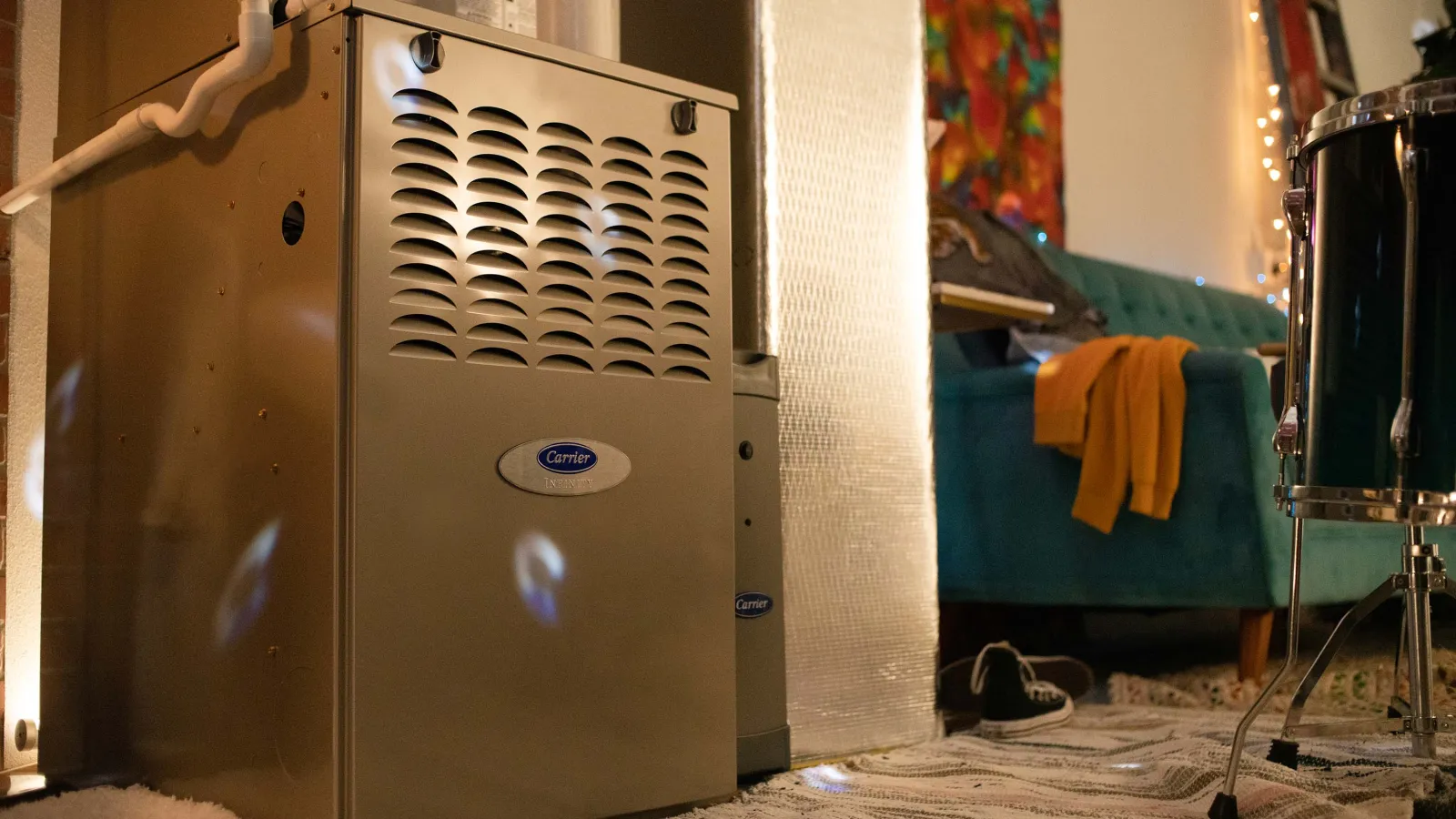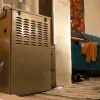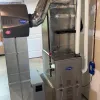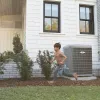Around Atlanta, we encounter many older homes where furnaces vent combustion gases into chimneys. In theory, this is ok. The furnace exhaust is hotter than the surrounding air. Once inside the chimney, noxious fumes, including carbon monoxide (CO), rise to the top and dissipate into the great outdoors. No problem, right?
Well… yes. It can be a problem.
Two different chimneys. Two different scenarios.
Imagine two different homes, each of which has a furnace that vents into a chimney.
The first home contains a mostly internal chimney. Nearly all of the chimney is contained within the home (and, therefore, inside the building envelope). The only exception is the part at the very top, just above the roofline. This chimney also contains an interior metal liner that ties in seamlessly with the furnace’s exhaust pipe.
Now consider another home where the chimney contains a clay and mortar liner. It’s an external chimney, so three sides of the chimney reside outside the home. Compared to the chimney in the first home, this one has more exposure to outdoor temperature fluctuations because it’s not located inside an insulated space.
During the winter, the chimney in the first home stays as warm as the home’s living room. When hot combustion gases enter the chimney, they don’t lose much heat – they’re still hotter than the surrounding air. That being the case, they easily vent out of the chimney and away from the home. The metal liner also ensures a seamless connection between the exhaust pipe and the chimney itself.
Not so with the other chimney! Since it’s largely exposed to the elements, the chimney stays cold all winter long. When the furnace exhausts into the chimney, the gases quickly cool off before exiting to the outdoors. They can’t all rise to the top of the chimney, so some of them backdraft through the vent pipe itself and enter the home’s crawlspace. Not good
Furnaces that vent into chimneys can be hazardous, but they don’t have to be.
In our “tale” above, it’s clear that the first chimney is the better option from a safety standpoint. However, in the real world, things aren’t always so cut and dry.
Some people have exterior chimneys that have been retrofitted with metal liners. Others have interior chimneys with masonry liners. And so on. All kinds of scenarios are possible.
If your furnace vents into a chimney, a combustion safety test is the only way to be sure that combustion gases aren’t backdrafting into your home. And while you should have a carbon monoxide detector in your home, waiting for it to go off is not a good strategy – especially since it might not even go off when you need it to.
It’s better to preempt danger, not wait for it to arrive. Here’s when you need to hire a pro to perform a combustion safety test for your furnace-to-chimney situation:
- You’ve never had it tested before. If your furnace vents into a chimney and you’ve never done a combustion safety test, it’s a good idea to get one. That’s especially true for external chimneys since they stay colder during the winter and are more prone to exhaust-related problems than internal chimneys. Older clay-and-mortar liners are also subject to damage and deterioration that can lead to inadequate venting of furnace exhaust.
- You see white corrosion on your furnace vent pipes. More often than not, this means you’ve got a back drafting problem. When the combustion gases stay inside the vent pipe or are forced back into it before escaping the chimney, you’ll see corrosion on the metal – usually at the elbows.
Don’t panic if either of these situations applies to you! Assuming you’re sitting here, reading this, and still breathing ok, you’re probably going to be just fine. However, it’s a good idea to schedule a combustion safety analysis pronto so you can find out for sure if there’s anything dangerous going on.
The good news? There’s always a solution.
Let’s say you’ve got a furnace-to-chimney back-drafting problem. What now?
One solution is to install a strong, metal chimney liner that’s unlikely to crack or corrode. You can tie it into your furnace exhaust pipe and reduce the potential for CO to backdraft into your home.
Another fix is to upgrade to a closed-combustion furnace (90% AFUE or higher). This fix often makes sense if you’ve got a really old furnace or a big external chimney that stays cold throughout the winter. These high-efficiency units use PVC pipe to pull air in for combustion and vent the by-products to the outdoors. Your furnace won’t exhaust gases into your chimney anymore. Instead, an HVAC contractor will install the system to expel the exhaust directly outside your home.
What about gas water heaters?
In some homes, gas water heaters also vent into chimneys. These should be tested as well – especially if you see melted (or melting) plastic grommets on the side of the water heater. That’s a sign that hot gases are back-drafting toward the unit.
A backdrafting water heater is arguably an even bigger problem than a back-drafting furnace. After all, furnace exhaust leaks are only a risk when the furnace is operating. Water heaters operate all year round, so you’re at risk even during the summer!
If you find out that you have a problem with a backdrafting water heater, you’ve got two options:
- Install a chimney liner. This is the same advice from above. When applicable (and practical), installing a chimney liner inside your existing chimney might fix the problem.
- Get a new water heater. Tankless gas water heaters have dedicated exhaust pipes that won’t vent into your chimney. New electric water heaters are also much more efficient than the ones that were available several years ago. The most efficient water heaters on the market, heat pump water heaters, are powered by electricity and require no combustion to heat your water!
CO poisoning is very real and very serious. It’s smart to get your system checked out.
You probably don’t have a problem with carbon monoxide, but it’s a good idea to be certain.
Chimney liner problems, along with cracked heat exchangers, are among the most common sources of CO leaks. The only way to be sure you don’t have a problem is to have a pro perform combustion analysis. At PV Heating, Cooling & Plumbing, we always perform one as part of our whole-home assessment. But we can also do one a la carte if that’s what you need.
When properly designed, a chimney-vented furnace is ok. Regardless, you should verify whether the design is sound and that it hasn’t been compromised in any way throughout the years. A true combustion safety inspection with a combustion analyzer is the best way to do that.






